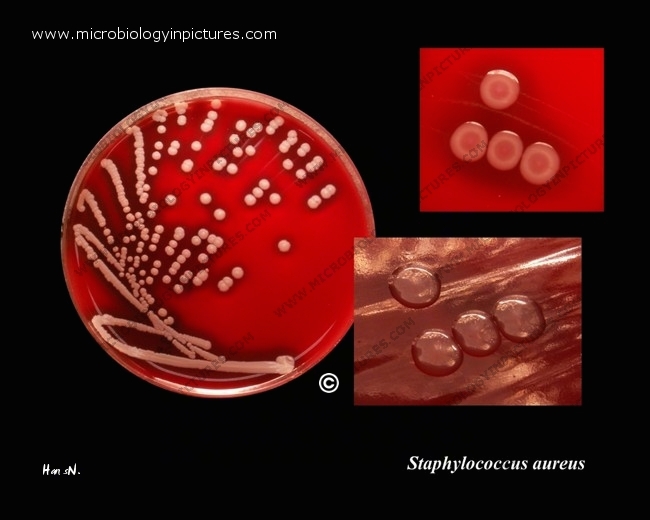
Blood agar plate with Staphylococcus aureus aureus. Growth characteristics of Staphylococcus
For pairwise interactions, blood agar plates (5% sheep blood in tryptic soy agar base, Hardy diagnostics, CA, USA) were inoculated with 2.5 µL of overnight cultures of single S. aureus and Bcc strains (OD 600 = 1) at separation distances of 0.5, 1 or 5 cm. Plates were incubated at 37 °C and the hemolytic activity was recorded every 24 h for.
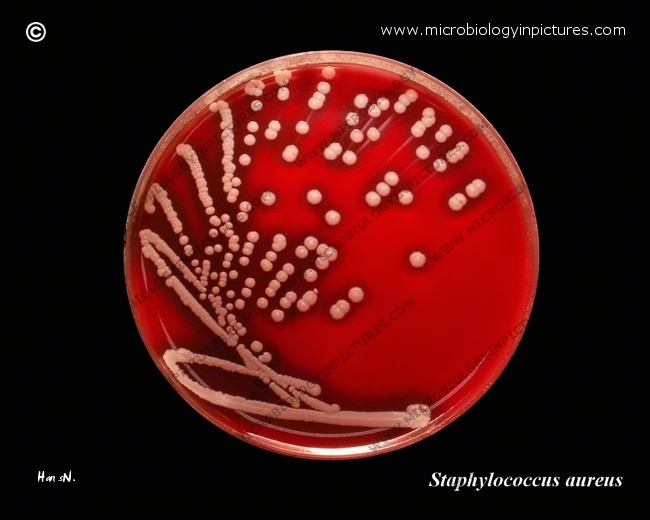
Staphylococcus aureus on sheep blood agar.
Neutrophils play a crucial role in the fight against S. aureus but suffer from deficiencies in function leading to increased infection.. the bacteria on MH agar plates.. and blood were.
[Solved] Illustrate in an agar plate how each microbes (s. aureus, p.... Course Hero
To prepare the medium, the TSA is cooled, the blood is added aseptically, and then the plates are poured. (1) There are two types of hemolysis. Alpha-hemolysis (α) is caused by damage (but not lysis) of the RBCs in the blood; the media is translucent with a green-ish tinge around the colonies (1). Beta-hemolysis (β) is lysis of the RBCs and.

Growth of Staphylococcus aureus after 24 hours on blood agar and... Download Scientific Diagram
Figure 4: Large, creamy white, beta hemolytic colonies typical of Staphylococcus aureus. (Rebecca Buxton, University of Utah, Salt Lake City, UT) Figure 5: Strains of Staphylococcus aureus may or may not produce a golden yellow pigment. (beta hemolytic, non-pigmented strain. Compare with Figure 6). (Rebecca Buxton, University of Utah, Salt Lake.
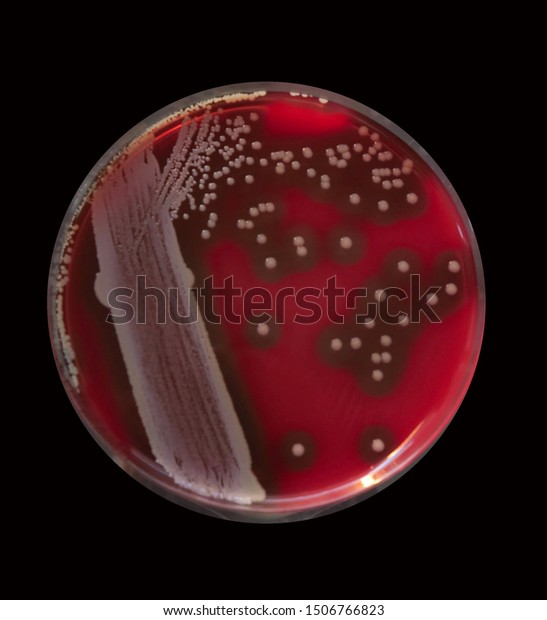
Saureusgram Positive Bacteriagrowth On Blood Agar 스톡 사진(지금 편집) 1506766823
Hemolytic phenotype of SIHP strains on sheep agar blood plates. As shown in Figures 1A,B, the complete hemolytic ring (β-hemolytic phenotype) was observed in control S. aureus strains after culturing strains on blood agar plates for 24 h. However, different hemolytic phenotypes (called incomplete hemolytic phenotype here) were displayed in.

Staphylococcus aureus on blood agar Download Scientific Diagram
Although we focus on S. aureus grown on blood agar in this work, ColTapp can process images of many different bacterial species growing on different colored agar media (Supplementary Fig. S5 and.
Staphylococcus Aureus Hemolysis On Blood Agar
Synergistic hemolysis in the blood agar plate results from the interaction of the beta-hemolysin with the factor. Both hemolytic and non-hemolytic strains of group B streptococci show this phenomenon.. Firstly, place disks containing beta-lysin of S.aureus on a warmed blood agar plate. Then, streak microorganisms 2 to 3 mm from the edge of.
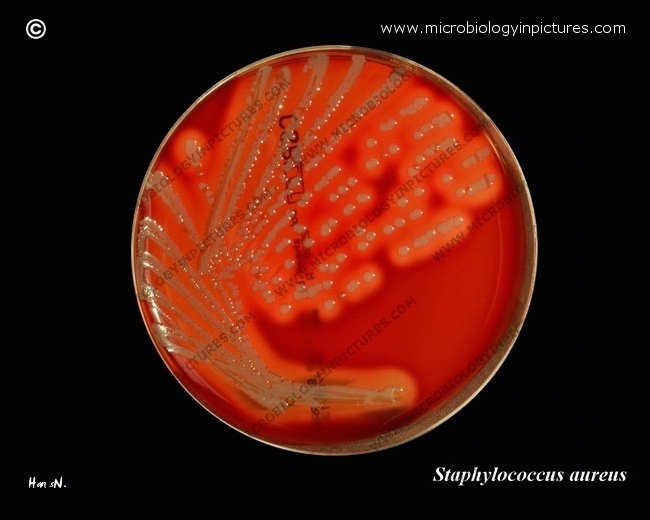
Staphylococcus aureus on Columbia blood agar.
Twelfth out of 50 (24%) S. aureus strains fonned both 13and 6-hemolytic colonies on the blood agar plates. Strains developing transparent zones around colonies were considered to have 13-or 6-hemolytic activities. Mastitic milk decreased directly the lytic effect of both 13-and 6-hemolysins of S. aureus on hemolytical blood agar plates (p < 0.

Staphylococcus aureus on Columbia Horse Blood Agar detail a photo on Flickriver
Enterogeneric strains of S. aureus are found in various food products. They may survive on dry skin. Thirty percent. The inoculated plates should be incubated at 35°C to 37°C for 24 to 48 hours. On Blood agar, growth occurs abundantly within 18 to 24 hours. Round, raised, opaque, yellow to golden yellow colonies of 1-2mm in diameter are.
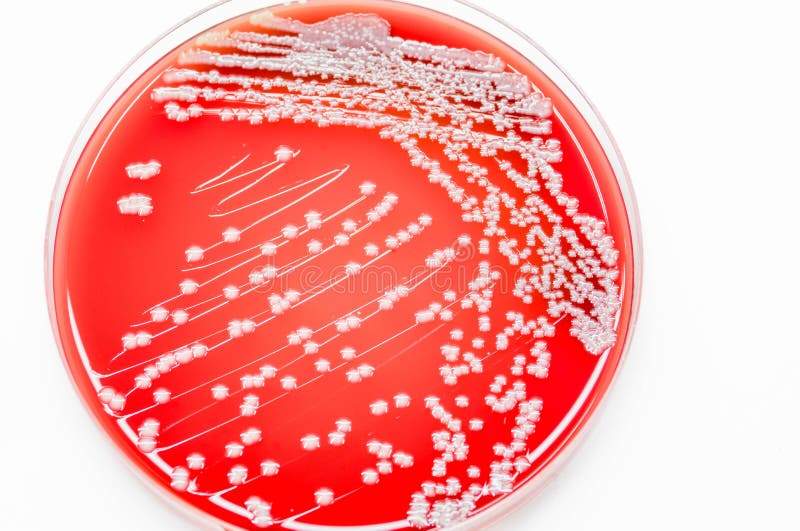
Bacterial Culture Growth on Blood Agar Media (Staphylococcus Aureus). Stock Photo Image of
Figure 3 Beta hemolysis by S. aureus on Blood Agar Plate - Source: Ngoc Dung Le from the Netherlands. Mannitol Salt Agar (MSA). Staphylococcus aureus displays beta-hemolysis on blood agar, characterized by a clear zone around colonies due to complete red blood cell lysis. 5. Oxidase Test
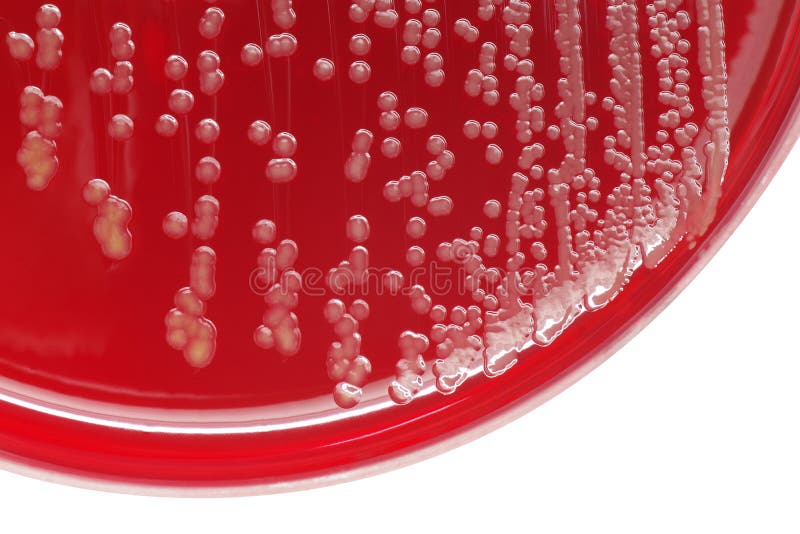
Staphylococcus Aureus Bacterial Colonies On Blood Agar Plate Stock Photo Image 68297348
Staphylococcus aureus is an important bacterial pathogen in humans, causing various critical infectious diseases such as septicemia, toxic shock syndrome, pneumonia, and infective endocarditis (1, 2). S. aureus is one of the leading pathogens of bloodstream infections, the second rank to Escherichia coli.The hospital mortality rate for S. aureus bacteremia ranges from 15% to 40% ().
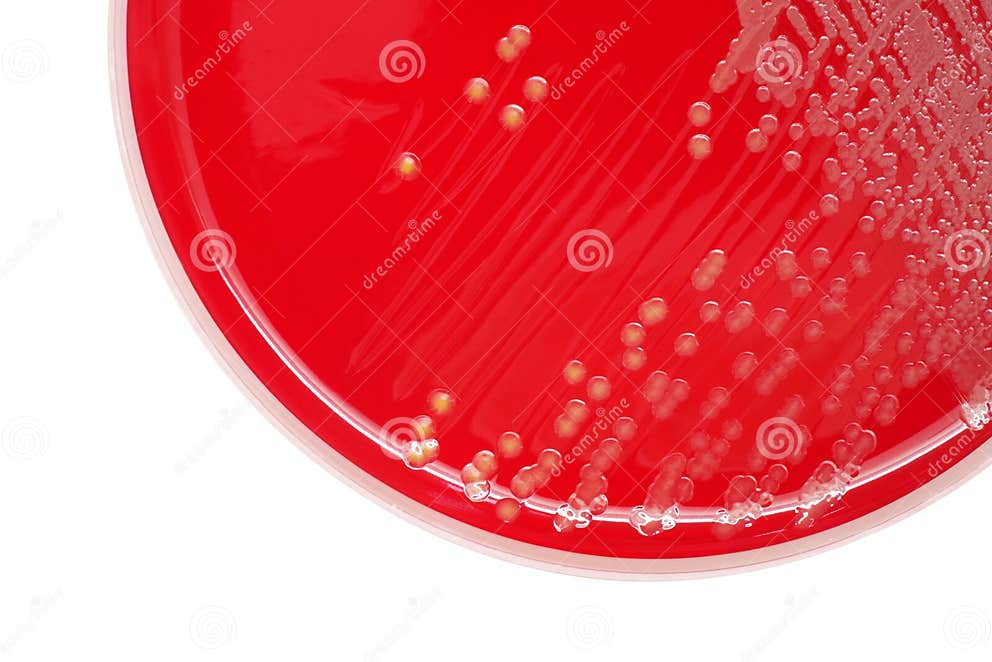
Staphylococcus Aureus Bacterial Colonies on Blood Agar Plate Stock Image Image of culture
S.aureus is often considered to be the most problematic of the three pathogens and is distinguished from the other two by being the only one able to coagulate plasma.. 1 Columbia naladixic acid blood agar plate (CNA) 1 Staphylococcus medium 110 (SM110) agar plate; 1 DNase agar plates; Novobiocin (5 microgram) antibiotic discs;

Staphylococcus aureus on blood agar with beta hemolytic colony YouTube
Tellurite and lithium chloride in Baird-Parker agar inhibit the growth of most bacteria, while pyruvate and glycine specifically promote the growth of S. aureus. Tryptic soy broth (TSB) and BHI are the preferred media to grow cultures of Staphylococci. Cultures are grown at 37°C with aeration.

Colony morphology on TSA or blood agar plates. (A) S. aureus wildtype... Download Scientific
Shown below are isolated colonies of S. aureus on a blood agar plate. Colonies that are visible to the human naked eye contains tens of thousands or even millions of individual bacteria!! Image 1: Notice individually isolated colonies: Large, creamy white, circular, beta-hemolytic colonies typical of Staphylococcus aureus cultured on Blood agar.
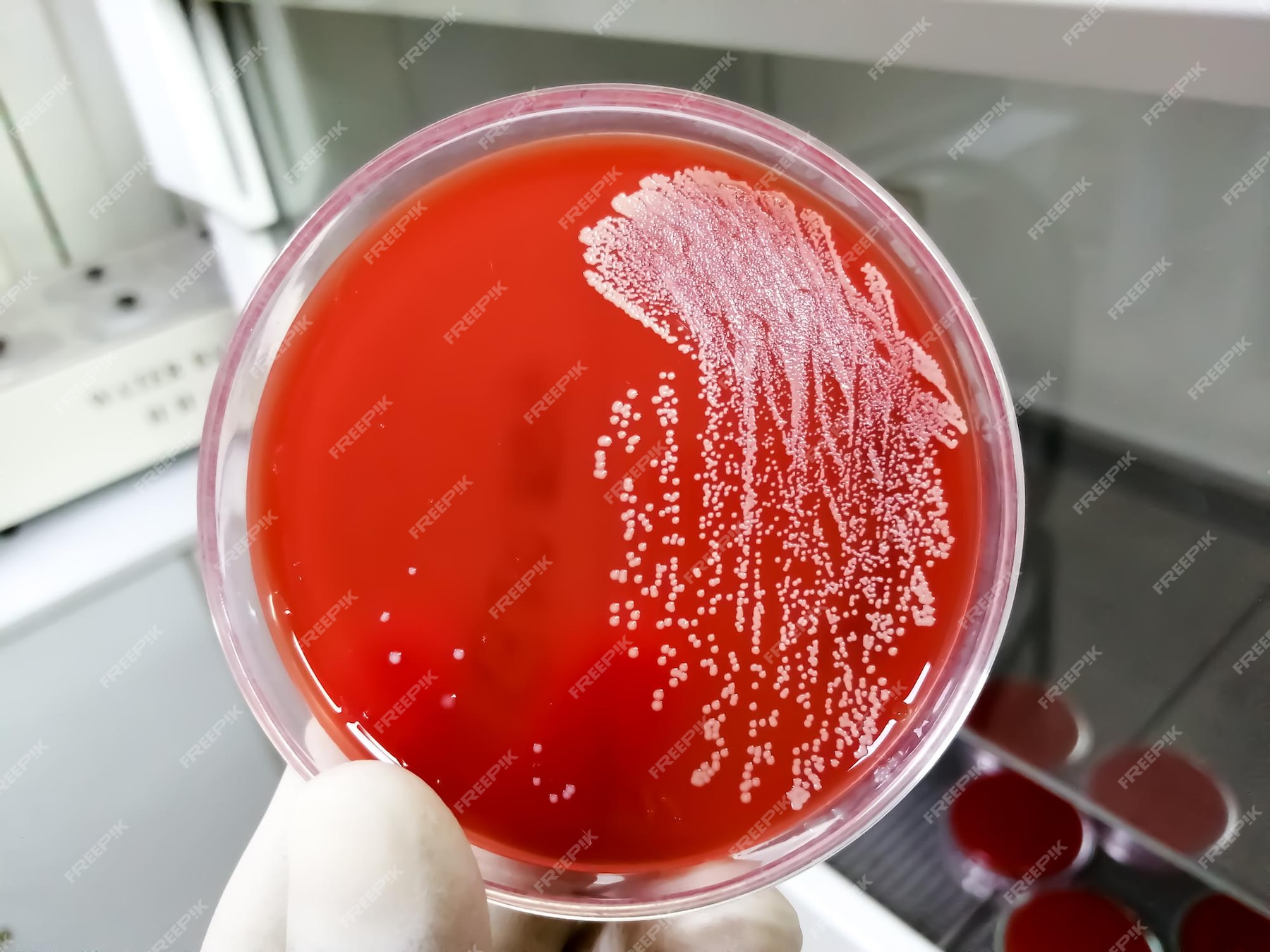
Premium Photo Staphylococcus aureus growth on blood agar
Inclusion criteria were well-isolated colonies of S. aureus on blood agar plates and exclusion criteria were small colonies and confluent colonies on blood agar plates. Blood agar plates were incubated for 24 and 48 hours at 35 °C with 5% CO2. The plates were read with the naked eye. If needed, a magnifying glass was used for assistance in.
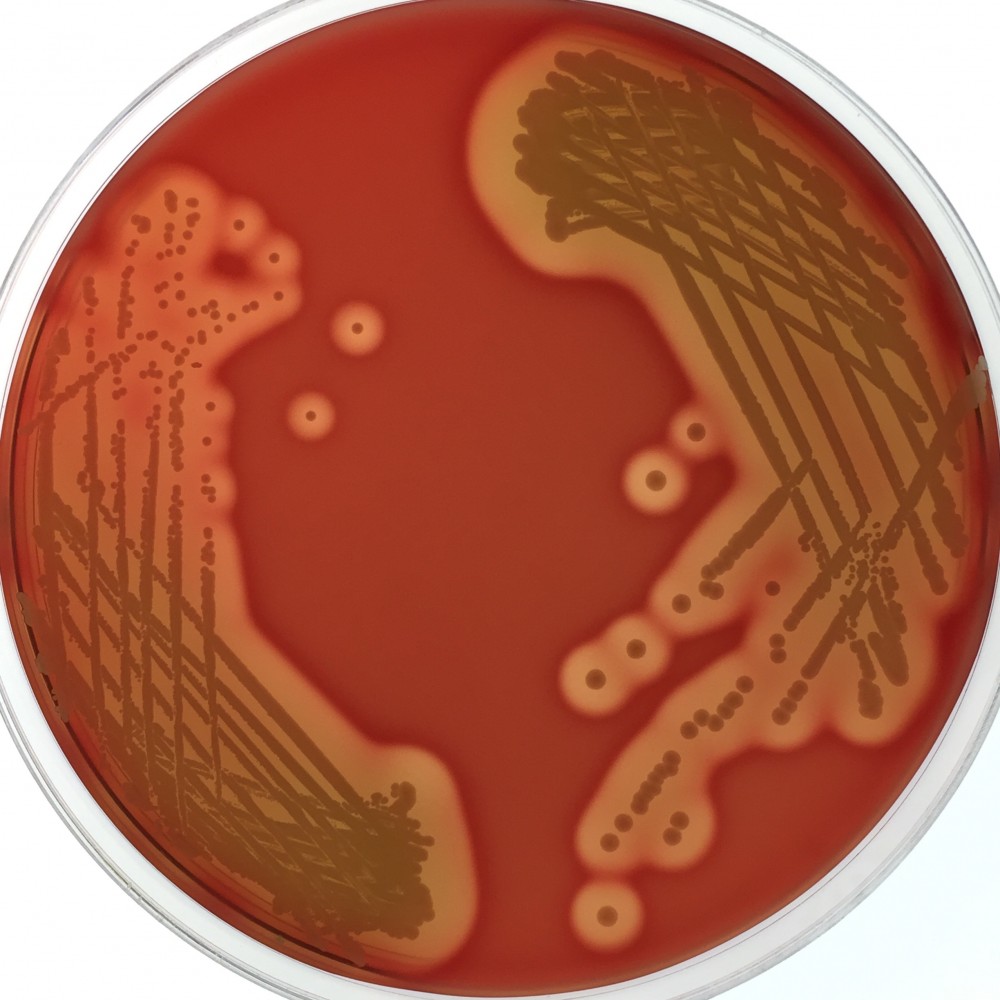
Staphylococcus Aureus Blood Agar Plate
Methods Bacterial strains and growth conditions. Staphylococcus aureus strains (Additional file 1: Table S1) were grown in Tryptic Soy Broth (TSB) containing 2.5 g/l glucose (Sigma-Aldrich) or in Bacto™ Tryptic Soy Broth without glucose, Benton Dickson (BD286220).Blood agar plates contained 1.5% Agar (Difco) and 5% calf's blood. Antibiotics were added in the following concentrations.
